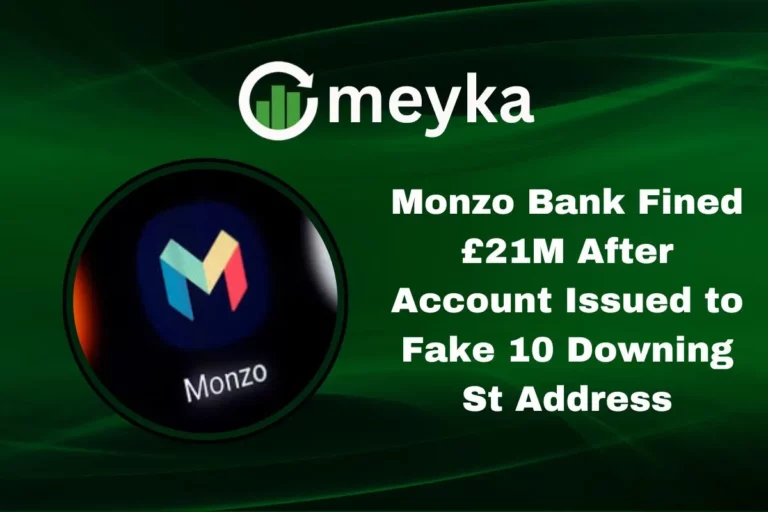Bitcoin Coinbase Premium Turns Negative as October Sell-Off Hits Market Sentiment
The crypto market has entered a cautious phase as the Bitcoin Coinbase Premium Index has turned negative, signaling a drop in buying pressure from U.S. institutions. This comes during a wider October sell-off, which has slowed the bullish momentum that previously pushed Bitcoin toward new yearly highs. The shift has sparked debate among traders, analysts, and long-term investors about whether Bitcoin is entering a temporary correction or whether a deeper trend reversal is forming.
For many market watchers, the Coinbase Premium Index is more than a number. It is a real-time indicator of how much demand is coming from U.S.-based institutional investors, including hedge funds, asset managers, and corporate holders. When the premium turns negative, it suggests a reduction in large-scale U.S. spot buying, which can weaken Bitcoin’s price support levels.
What Is the Coinbase Premium and Why Does It Matter?
The Coinbase Premium Index measures the price difference between Bitcoin on Coinbase (U.S.) and Binance (international). If the price is higher on Coinbase, the premium is positive, meaning a strong U.S. buying appetite. If the premium goes negative, demand from U.S. whales and institutions is weaker than global demand.
A negative premium often precedes price consolidation or correction, especially when accompanied by declining trading volume.
Why Did the Premium Turn Negative? Key Drivers Behind the October Sell-Off
Analysts point to several overlapping factors behind the sudden change in sentiment:
- Rising U.S. Treasury yields are pulling money away from risk assets
- Stronger U.S. dollar (DXY), which historically pushes crypto down
- ETF inflows are slowing, reducing institutional momentum
- Profit-taking from Bitcoin whales after recent rally
- Global risk aversion is tied to geopolitical and economic uncertainty
The result? A mini “risk-off” cycle across multiple asset classes, not just Bitcoin. Even major tech and AI stocks saw slowdowns during the same period, confirming a broad retreat in speculative appetite.
Bitcoin vs the Stock Market: A Growing Connection
Although often marketed as digital gold, Bitcoin is behaving less like a safe-haven asset and more like a high-risk tech stock. Analysts tracking institutional portfolios note that many funds now treat Bitcoin similarly to high-growth equities, especially within AI, cloud, and fintech-related portfolios.
This means when the stock market cools off, especially the Nasdaq, Bitcoin usually follows. The October pullback aligned with a decline in large-cap tech stocks, further confirming this trend.
Market Snapshot: Bitcoin Conditions in October
Here is a simple breakdown of the current market status:
| Market Indicator | Current Trend |
| Coinbase Premium Index | Negative |
| Price Trend | Pullback after strong Q3 rally |
| Spot ETF Inflows | Decreasing |
| Bitcoin RSI | Neutral to slightly oversold |
| Fear & Greed Index | Leaning toward Fear |
| Institutional Activity | Lower than September levels |
Is This a Warning Signal or a Buying Opportunity?
Historically, periods of negative premiums do not always translate into a long-term downtrend. Sometimes, they represent a cooling phase before the next accumulation cycle.
Examples include:
- July 2021 (before the push toward $69K)
- June 2023 (before Q4 rally)
- March 2020 (before full bull cycle)
However, what makes the current shift more notable is that ETF demand has slowed at the same time, removing the strong institutional buying support that helped Bitcoin recover earlier in 2024.
Market strategists now warn that Bitcoin may test key support levels around $55K–$58K if U.S. buyers continue to step back.
How Retail Investors Should Interpret the Trend
A negative Coinbase Premium does not automatically mean Bitcoin is heading for a crash. What it does signal is reduced enthusiasm among big-money players, which affects short-term liquidity and support levels.
Experts recommend:
- Avoid panic selling during low-volume dips
- Watch for a premium reversal as bullish confirmation
- Track ETF inflow data instead of social media hype
- Focus on the multi-month trend rather than the hourly charts
On-chain analysis shows that long-term holders are not selling aggressively, which suggests this phase is more about institutional rotation rather than full market surrender.
What Could Flip the Premium Positive Again?
Analysts believe three main triggers could restore institutional buy pressure:
✅ Renewed Bitcoin ETF inflows
✅ A drop in U.S. Treasury yields
✅ A weaker U.S. dollar index (DXY)
✅ Federal Reserve shifting toward interest rate cuts
✅ Return of whale accumulation phase
If any of these occur, demand from U.S. institutional desks may pick up again, pushing the premium back into positive territory, often a strong bullish signal.
Conclusion
The negative Bitcoin Coinbase Premium highlights a realistic slowdown in institutional appetite during the October sell-off, not a complete collapse of market confidence. The situation reflects macro pressures rather than crypto-specific weakness. While investors should stay cautious in the short term, the long-term Bitcoin narrative remains intact as adoption, regulation, and ETF participation continue to evolve.
The next directional move for Bitcoin will likely depend on institutional sentiment, macroeconomic conditions, and ETF flows, not retail hype alone. Smart investors are watching, not rushing.
FAQs
It means Bitcoin is cheaper on U.S. exchanges than global ones, showing weaker U.S. buying demand.
Not necessarily. It’s a caution signal, but past cycles show Bitcoin can recover once institutional demand returns.
It depends on the strategy. Long-term holders may see this as an accumulation range, while short-term traders may wait for a premium reversal.
Disclaimer:
The content shared by Meyka AI PTY LTD is solely for research and informational purposes. Meyka is not a financial advisory service, and the information provided should not be considered investment or trading advice.






